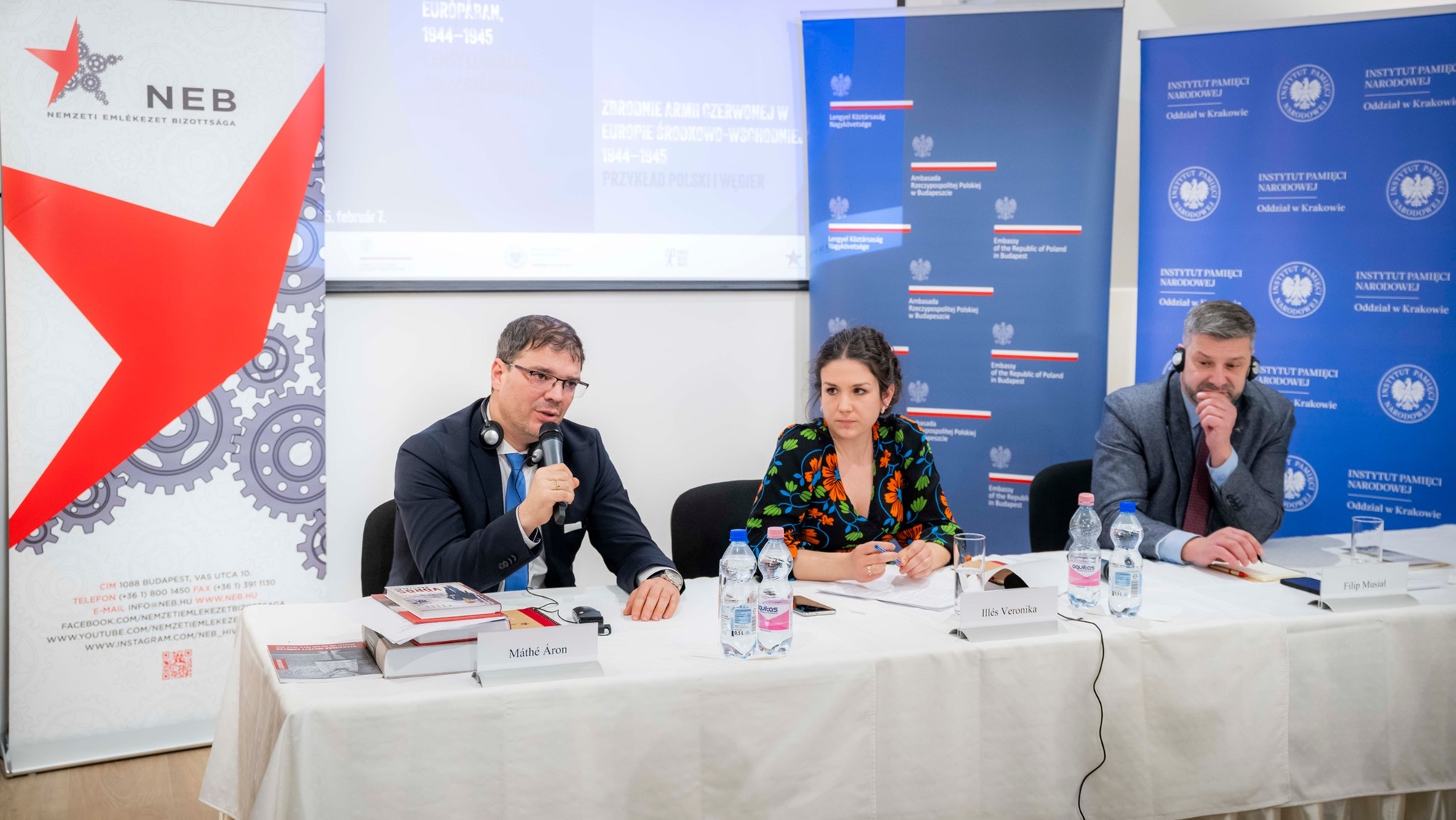The Budapest-based Committee of National Remembrance (Nemzeti Emlékezet Bizottsága, NEB) and the Krakow-based Institute of National Remembrance (Instytut Pamięci Narodowej, IPN) held a joint event in Budapest, Hungary on 7 February to commemorate and recant the brutal atrocities committed by the Red Soviet Army during World War II in the two Eastern European countries. NEB likes to refer to these events periodically hosted by them as ‘historical stops’.
Director Filip Musiał of IPN and Vice-Chair of the NEB Áron Máthé were the two distinguished speakers of the event. Meannwhile, Veronika Illés served in the role of the moderator.
Mr Musiał started by saying that what Stalin did to his home country of Poland in 1944 during World War II is the same as what Lenin tried to do in 1918 during World War I. He also cited the famous Molotov–Ribbentrop Pact of 1941, which divided Poland between the two aggressors, Nazi Germany and the Soviet Union. However, even as early as 1938, 17,000 Polish Jews were expelled from Germany, so the atrocities started even before the World War. The Red Army arrived in Poland in 1943, where they committed numerous war crimes against civilians and military men alike, Mr Musiał reminded all.
Mr Máthé shared that European warfare became gradually more ruthless during the ‘small wars’ in between the two World Wars, in places such as Belgium, Poland, and Russia. He did admit that this process included members of the Hungarian Defence forces intentionally harming civilians in the Soviet Union, in the fear of them being partisan fighters. By August 1939, he pointed out, Adolf Hitler openly talked about going after civilians in his speeches.
The moderator, Ms Illés, in order to contrast the aforemntioned deeds by Hungarian soldiers, noted that the Hungarian Army defended civilians in 1943 against the Ukrainian Soviet invaders in East Galicia.
Mr Máthé then grouped the Soviet atrocities into three categories. The first was looting, which, as he explained, took place both in an organized and in an ad hoc, individual fashion as well. The second one was the mass raping of Hungarian women by Soviet forces. He estimates that 50,000–200,000 women were victims of such heinous crimes in Budapest alone. Thirdly, he talked about what is known by Hungarians as ‘the Málenkij robot’, when around 800,000 Hungarians were transferred to the Soviet Union for forced labour.
Mr Musiał seconded that looting by Soviets, both organized and ad hoc, was common in Poland during the invasion as well. He also shared that, in gallows humour, Soviet soldiers often jokingly said that they were looking for Hitler when they entered a home that they pillaged.
Near the end of the discussion, the moderator asked if there were any positive impacts left by the Soviet soldiers. Evidently, the experts could only come up with very little, such as the restarting of the operation of a grain mill in Hódmezővásárhely, Hungary. They also stated that mass rape, originally tacitly condoned by Soviet leadership, was eventually prohibited as the war was coming to an end; and some Soviet soldiers were even executed for such crimes.
In Prague, Máthé shared, the locals viewed the Red Army as true liberators. However, that was not the case by far in either Poland or Hungary.
Related articles:








